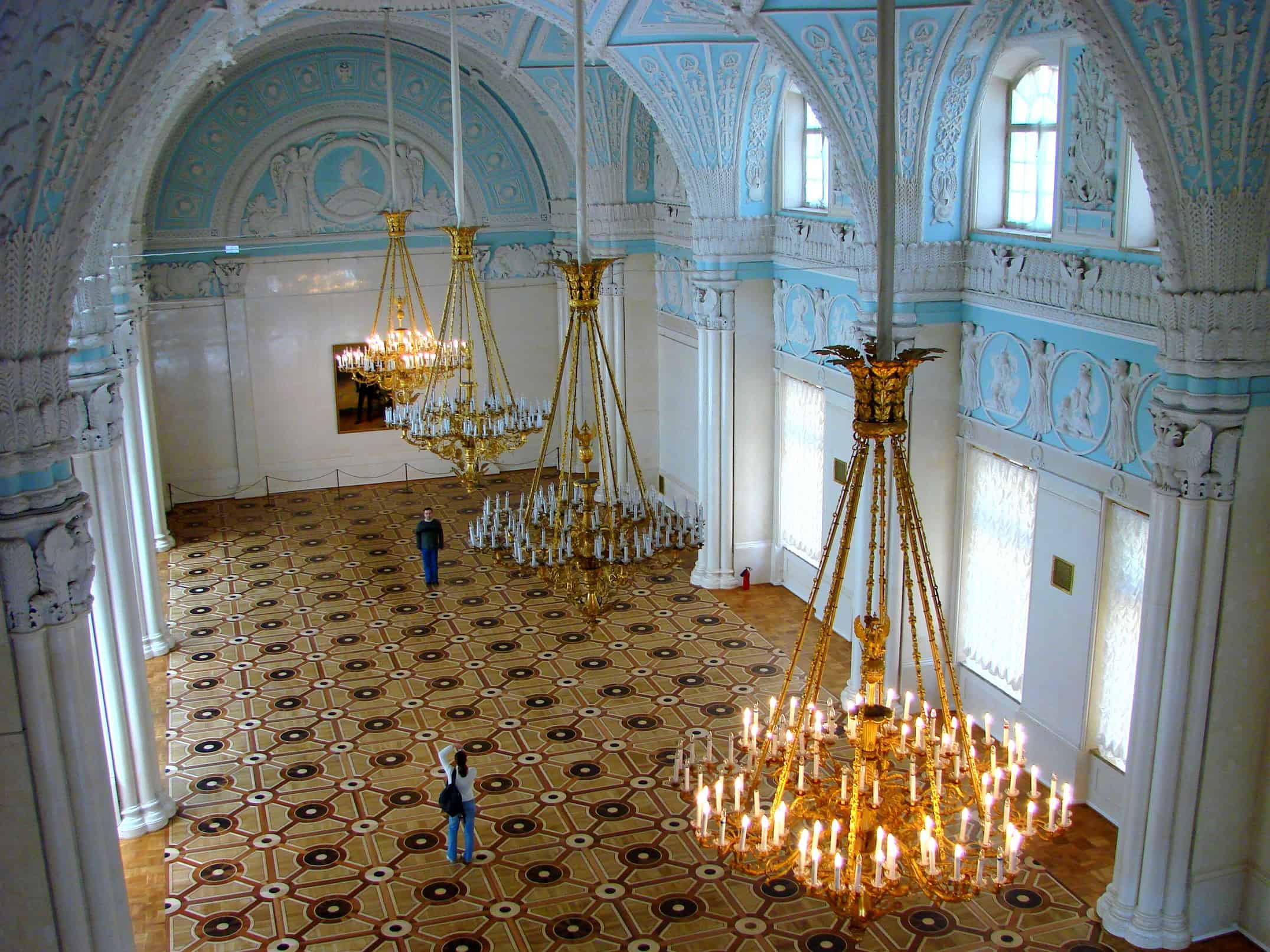 Creativecommons.org/Joe deSousa
Creativecommons.org/Joe deSousa
In 1764, Russian Empress Catherine the Great purchased a considerable collection of western European paintings, laying the foundation for St Petersburg’s magnificent Hermitage Museum. As one of the largest museums in the world, it would take months to see the three million works of art and artifacts from around the globe that make up the collection. Here are just a few of the highlights…
Italian Treasures
There are more than 30 rooms of Italian art covering the 13th to the 18th centuries at the Hermitage. Two works by Leonardo da Vinci are housed here: Madonna with a Flower (1478) and Madonna Liita (1490-91). Raphael is also represented by two works: Madonna Conestabile (1502-03) and The Holy Family (1506). There are two later works by Titian – The Flight into Egypt (early 1500s) and Portrait of a Young Woman (1530), but you’ll also find a number of paintings from his early days. And there is one Michelangelo there: Crouching Boy (1530-34).
 Creativecommons.org/Vesna Middelkoop
Creativecommons.org/Vesna Middelkoop
Spanish Treasures
A beautiful piece by El Greco, The Apostles Peter and Paul (1580s) can be found in the Spanish Room. Two works by Diego Velazquez, Luncheon (1630s) and Portrait of Count Olivares (1640), are outstanding, as are the 13 paintings by Murillo.
French Treasures
The Renoir Room on the second floor has six works by Pierre Auguste Renoir, including Girl With a Fan (1881) and Portrait of the Actress Jeanne Samary (1878). Seven paintings by impressionist Claude Monet are also in this area, as well as pieces by Cezanne, Gauguin, Matisse and Picasso. No, Picasso is not French, but curiously his paintings are displayed here along with one by Van Gogh.
Flemish Treasures
The Hermitage has one of the most significant collections of paintings and sketches by Peter Paul Rubens, with some 22 paintings, including Perseus and Andromeda (1620-21) and Bacchus (1638-40). The entire collection of Flemish paintings is so large that works are often rotated in and out of the display.
 Creativecommons.org/greenacre8
Creativecommons.org/greenacre8
Dutch Treasures
Nearly two dozen works by Rembrandt are in the collection and an entire room is dedicated to his and his pupils’ art. The Return of the Prodigal Son (1668-69) was painted shortly before his death, making the piece seem almost prophetic in retrospect.
The Treasury
There is an additional fee, but for visitors interested in gold and jewellery the treasure gallery alone could take several days to explore. The Gold Rooms contain art and jewellery fashioned out of gold and other precious metals from the 7th century B.C. up to the 19th century A.D. Pieces come from Greece, medieval Europe, the Byzantine Empire and Asian cultures, and with more than 1,500 works to see, it’s best to focus on the time period or culture that is most interesting to you.
The Diamond Rooms present the development of the jewellers’ craft. Jewellery pieces, statuary, ornate hilts and decorative jewel boxes fill the rooms. The collection of jewellery from 17th-century India is one of the few in the world, and the dress weapons, including many scabbards, are simply amazing.
The Arsenal
With more than 15,000 pieces from Russia, Europe and Asia, the arsenal collection is incredibly comprehensive and surprisingly beautiful. Nicholas I was a collector of artistic pieces and the highly ornate rifles and other weapons present an interesting contrast to how weapons are normally viewed. Shields, armour and similar protective gear are also displayed here.
 Creativecommons.org/Jim Kelly
Creativecommons.org/Jim Kelly
Pretty Porcelain
The museum of the Imperial Porcelain Factory was established by Peter the Great. Pieces from the factory and those acquired elsewhere are housed in this museum that covers several centuries in its collection. There’s also a small 400-piece collection of artistic glass and crystal-ware displayed in this building.
The Winter Palace
Built in the 18th century for Peter I, this huge building was meant to reflect the might of the Russian Empire and the power of the tsars. It contains 1,500 rooms and during the years that it was in use, it witnessed the reigns of three empresses and three emperors, in addition to Peter I. Each ruler influenced the architecture and makeup of the collections within the palace walls.
Empress Anna Ivanova (1730-40) felt that the palace decor was dull and coarse and she replaced much of the furnishing with mahogany and ebony pieces. Her private rooms contain furnishings of solid gold and silver, studded with rubies.
Elizabeth (1741-62) was determined to have a life of grandeur and she commissioned further expansion of the palace, taxing the Russian people mercilessly to achieve her goals. Much of the final floor plan of the palace was completed during her reign.
Catherine II (1762-96) needed her own wing so she commissioned a French architect to create her private retreat, which she called the Hermitage. The design was simple, although large, and the art collection of the palace was used to furnish the rooms. Several major art collections were obtained during this time period, and Catherine II is responsible for many of the Old Master pieces that are in the Hermitage.
Catherine the Great’s son Paul I only briefly inhabited the palace. After his death his son Alexander I became emperor and added the collection of French Empress Josephine to the palace’s collection.
Nicholas I, brother of Alexander, took over rule in 1825 and was responsible for the rebuilding of the palace following the 1837 fire. It was Nicholas I who designated the Hermitage as a public art gallery and had the structure redesigned for that purpose.


